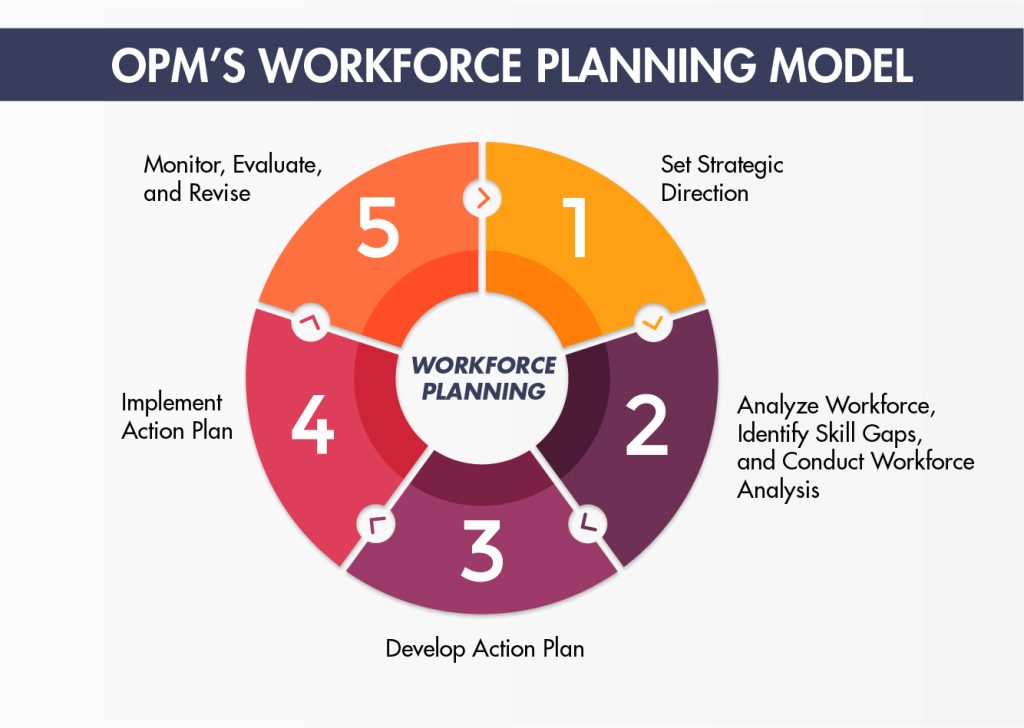
The Army is partnering with George Mason University to research new machine learning methods to predict future workforce trends and requirements.
by Rebecca Wright
Staffing shortages have become a frequent talking point since the COVID-19 pandemic triggered “The Great Resignation,” an economic trend wherein employees resigned from their jobs in large numbers. Although staffing shortages are nothing new, these recent changes in the economy are not only highlighting the importance of having sufficient staff on hand now, but also being prepared to have sufficient qualified staff on hand in the future—whether it is six months from now or in five years.
Perhaps you have walked into a busy restaurant or grocery store lately and noticed the business was understaffed. Or it was obvious that the employees were struggling to keep up with their workload. In these situations, insufficient staffing not only affects a company’s customers but also the current staff. If staff members are overwhelmed, the strain can lead to employee burnout and resignation.
If an organization waits until it becomes short-staffed before looking to hire, it can create adverse effects by creating disruptions in workflow, unmanageable workloads, missed deadlines, negative impacts on customer service and low employee morale. Therefore, the ability to predict having sufficient manpower is essential in being prepared to support mission requirements.
COME UP WITH A PLAN
Workforce forecasting is a “process of estimating future demand and supply of human resources in an organization,” according to LinkedIn. “It helps managers plan ahead for staffing needs, optimize resource allocation and align workforce strategies with business goals.” From small businesses to large corporations and even government agencies, predicting future staffing requirements is a necessity. Predicting and preparing for future requirements is about having the right people, in the right place, at the right time. This involves understanding the demand for specific skills, determining when and where they will be needed, identifying skill gaps and managing employee training, recruitment and retention. All of these elements should factor into an agency’s overall strategic plan.
There are a variety of methods and steps that an organization can implement into a workforce forecasting plan. However, a successful plan starts with identifying the organization’s goals and initiatives and establishing priorities. This is step one of the Office of Personnel Management’s five-step workforce planning model. Once goals and initiatives have been identified, an organization can begin working on the next steps of the plan to effectively achieve those goals. The next step is conducting an analysis of the workforce. This often entails analyzing the current workforce and how it is likely to evolve. It also includes analyzing employee turnover, anticipating and preparing to backfill retirement-eligible employees, identifying current and future skill gaps, and supply and demand. Step three is developing a workforce action plan. This is a plan that is created to address these potential situations—closing gaps in the workforce, reorganizing the workforce, recruiting new employees, providing training for current employees, etc. The fourth step is executing the workforce action plan and monitoring it throughout its life cycle. The improvement measures that were put in place should be monitored to ensure that milestones are being met. Step five is evaluating and revising the workforce action plan, identifying areas of improvement and adjusting accordingly.

ALL IN THE PLAN
The Office of Personnel Management’s five-step workforce planning model. (Graphic by OPM and USAASC)
SETTING GOALS
The Army Director of Acquisition Career Management (DACM) Office requires accurate workforce forecasting to ensure mission needs are met. These forecasting capabilities need to include understanding the skills and abilities of current employees, identifying what skill gaps are present, identifying deficiencies in the hiring process and predicting employee migration.
The DACM Office established four goals under the Army Acquisition Workforce Human Capital Strategic Plan (HCSP); each goal serving a significant role in workforce development and forecasting. The first goal is workforce planning—devising a “comprehensive workforce plan that focuses on a strategic approach to talent acquisition to conduct competency identification and identify skill gaps to drive alignment, recruitment and retention of a diverse acquisition workforce.” The second goal is professional development, followed by leadership development and employee engagement.
Professional development aims to grow an experienced workforce that is prepared to adapt to a rapidly changing work environment. Leadership development seeks to build an acquisition leadership that can shape and guide expert teams. And employee engagement fosters initiatives that will enhance the Army Acquisition Workforce sense of purpose, dedication and commitment to the mission.
DIGGING DEEPER WITH MACHINE LEARNING
While some organizations’ workforce forecasting standards may focus most on having enough knowledgeable manpower, the DACM office would like to dig deeper—such as understanding employee behavior, employee-related decision-making, characterizing employee movement, understanding factors that influence job changes, behavioral patterns and environmental effects.
In August 2020, the U.S. Army Acquisition Support Center entered into a partnership with George Mason University (GMU) to conduct research on workforce dynamics. This research effort, which will run through August 2025, has been established and funded via the U.S. Army Research Institute (ARI) for the Behavioral and Social Sciences—the Army’s lead agency for research, development and analyses for the improvement of Army readiness and performance. ARI’s mission is to drive scientific innovation to enable the Army to acquire, develop, employ and retain professional Soldiers and enhance personnel readiness.
Even though workforce forecasting strategies have been in use for decades and are utilized across a multitude of companies and organizations, predicting future workforce requirements is typically performed by data collecting and models. Currently, this data is collected and modeled manually. Through the GMU partnership, the DACM Office looks to develop reliable workforce forecasting capabilities and understand workforce and employee patterns with state-of-the-art big data processing and machine learning methods.
Machine learning is a type of artificial intelligence that involves the use of data to build computer systems that will learn from the data provided. Essentially, machine learning techniques use specially designed algorithms to discover patterns and relationships in data to be used for analysis and to make predictions. Through the GMU study, this is being accomplished with a high level of detail and with algorithms tailored to the acquisition workforce with the use of command structure, job description, geographical and environmental information.
GMU has developed several incremental proof-of-concept models—evidence that demonstrates a concept is achievable—that provide individual-level resolution of the Army Acquisition Workforce. These are based on conceptualizing the workforce in a multiscale, integrated network built with nearly a decade of the personnel and organizational micro-level data. The result is a high-resolution longitudinal picture of the workforce that has not been available. This is a flexible and scalable quantitative framework that is expected to provide answers to difficult questions about organizational effectiveness. Improvements to these initial prototypes will be tailored to proactively address specific leadership questions about individual-level career forecasting, management and composition of teams, team performance and the effects of incentives and external influences on individual career decisions.
In the near future, the DACM Office expects this effort to improve our ability to understand personnel movements, workplace diversity, the effects of incentive programs and to build more effective teams in pursuit of the Army mission. By gaining a deeper understanding of these factors through machine learning, the Army will be able to make more informed decisions regarding training, recruitment and retention strategies.
CONCLUSION
When the need arises, agencies will need to know if there will be enough trained personnel in the right place at the right time. Accurate workforce forecasting will be crucial for the Army to effectively manage and plan to support future mission requirements. Developing the workforce of tomorrow involves investing in education, skills training, preparing individuals for an evolving workforce and recruitment and retention. Implementing machine learning in workforce forecasting can aid the Army by more accurately predicting workforce trends and eventually assist in making more informed decisions and optimize its human resources. Machine learning technology can help plan for having the right number of trained personnel available, ultimately enhancing mission success.
Douglas R. Bush, assistant secretary of the Army for acquisition, logistics and technology, said in the Spring 2022 issue of Army AL&T, “We must ensure the appropriate processes and tools are in place—particularly in the areas of recruitment, development and retention—for effective talent management.” Taking proactive steps by investing in education, building stronger leadership and fostering a healthy work environment can result in a knowledgeable and devoted workforce of the future. We must start today to properly prepare the Army Acquisition Workforce of tomorrow.
For more information, contact Daniel Stimpson, Ph.D., at daniel.e.stimpson2.civ@army.mil.
REBECCA WRIGHT is a writer and editor with Army AL&T magazine at the U.S. Army Acquisition Support Center at Fort Belvoir, Virginia. She has over 14 years of experience writing and editing for the Department of Defense and the Department of Justice.







